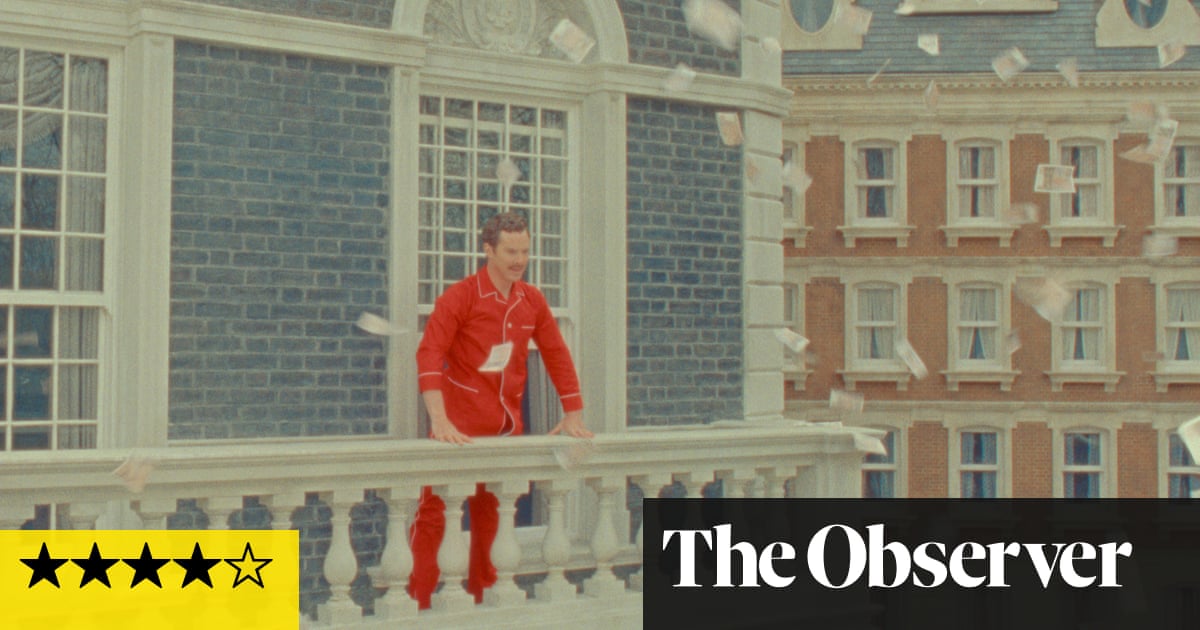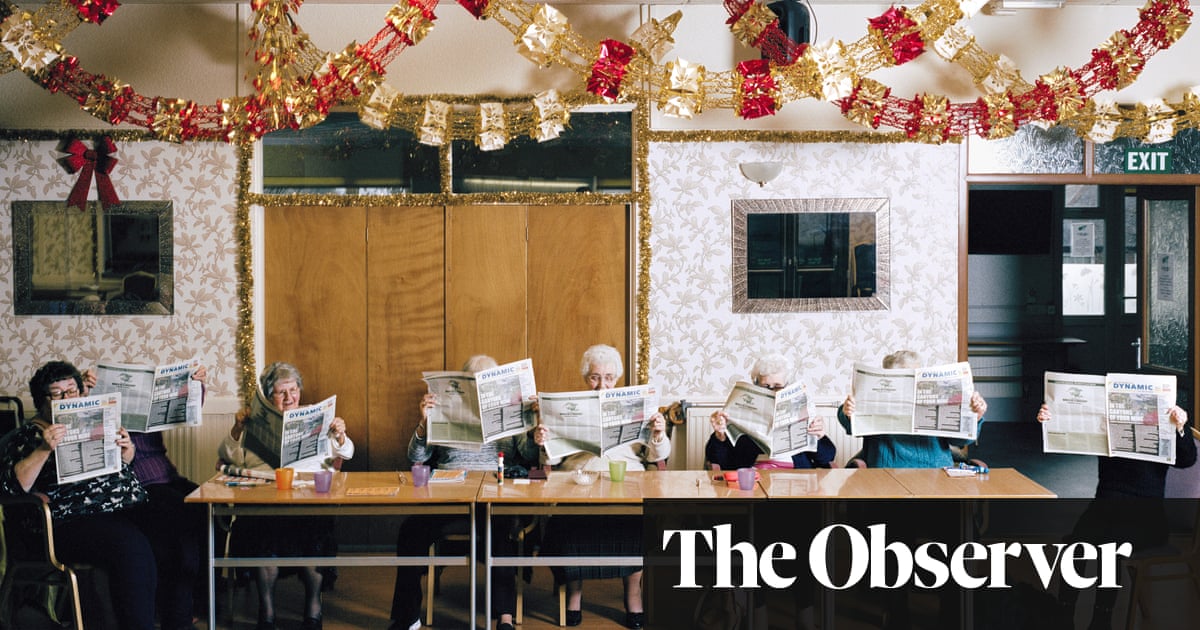
o get into the V&A’s blockbuster about the influence of Alice, I had to stand at a security gate for ages, waiting to be called forward into the silent museum. It was a tiny bit Kafkaesque. Then I remembered Kafka was probably influenced by Carroll so it was in fact Carrollesque. Both Carroll and Kafka create slippery, unstable realities in which hapless characters face menacing trials. They both define our world – but one was a modernist and the other a 19th-century don. This is the question this hugely enjoyable and thought-provoking exhibition raises: how did a Victorian children’s author create one of the myths that sum up the modern condition?
It’s huge fun, of course, from the acid colours of a 1967 poster of the Cheshire Cat (with Jefferson Airplane’s Grace Slick singing White Rabbit nearby, natch), to Heston Blumenthal’s recipe for mock turtle soup, one preparatory part of which takes, he says, about 67 hours. But what really plunged me down the rabbit hole was a film by artist Mariele Neudecker revealing that Cern has a physics experiment going on that it calls Alice – A Large Ion Collider Experiment. This is a nice literary crossover, as the experiment frees quarks from their bonds – quarks being a word invented by James Joyce, whose nonsense masterpiece Finnegans Wake is a Carroll homage. From psychedelia to avant garde cuisine to quantum physics, Alice has come to symbolise how, in Slick’s words, “logic and proportion have fallen sloppy dead”.
This permanent revolution began more than 150 years ago with an Oxford mathematician telling a story to a friend’s children. Picture yourself on a boat on a river. Curiouser and Curiouser might be a glib romp if it wasn’t so securely anchored in the Victorian world of Lewis Carroll himself – or rather Charles Dodgson, lecturer in mathematics at Christ Church, pioneering photographer and friend of the college dean, Henry Liddell. The puns and (il)logic games that permeate his writings, the show reveals, go back to his own childhood: a school report describes the young Dodgson’s constant, compulsive punning as if it were a tic. His mathematical research, too, took him through the looking glass, as we see in a scribbled page of “Fallacies” in which he gleefully demonstrates false syllogisms in algebra. The wit and weirdness of Carroll’s creations comes from these obsessions with the pitfalls of language and logic: one false word and you’re in another reality. “When I use a word it means just what I choose it to mean,” as Humpty Dumpty tells Alice.
The surrealists adopted Alice as a document of psychological mayhem. There’s a letter here from the British surrealist Eileen Agar about why Carroll was a godfather of this movement that wanted to unleash the unconscious. Max Ernst’s collage of a Victorian railway carriage compartment in which a bird-headed man is observed by the Great Sphinx appears to be on a riff of one of John Tenniel’s illustrations in Through the Looking Glass, which shows a man in a paper suit (his face that of Benjamin Disraeli) sitting opposite Alice, while she is closely observed by a porter with binoculars. If there was any doubt that Ernst is thinking of Carroll here, it’s removed by his painting called Alice in 1941, in which her grown-up body is encrusted with red melting rocks in a decomposing goo.
Voyeurism and nudity – here is a door the exhibition doesn’t want to open. It has Dodgson’s haunting portrait of Alice Liddell in profile, but keeps his other photographs of children to a minimum. He was an enthusiastic photographer of girls.
Yet the V&A makes a powerful case for Carroll as an overwhelmingly positive influence on the world. It stresses Alice Liddell’s own agency – first as an assertive child who “bullied” him to write down his story about her, then as a woman growing up among artists, tutored by John Ruskin and posing for Julia Margaret Cameron. We see how her hugely publicised visit to America in 1932 got Hollywood interested in Alice. Disney’s creation of a pop culture Alice is explored in detail but so are more eclectic versions, such as Jan Švankmajer’s Freudian puppet nightmare and Jonathan Miller’s black and white 1966 vision with Ravi Shankar on sitar.
Alice is revealed here to be so universal, so multifarious in modern culture that pinning down the Mad Hatter’s tea party or Jabberwocky to one interpretation, one idée fixe is futile. And to understand that you need to go back to its Victorian creators, plural. For the icon that is Alice was a collaborative creation. If you want to accuse anyone of creating a fetish blame Tenniel, the original illustrator of the Alice books.
Tenniel was already a celebrated political cartoonist. Their close working relationship is set out here. When Tenniel said a chapter of Through the Looking Glass called A Wasp in a Wig was too dull to illustrate, Carroll removed it. The artist’s sketches and trial “pulls” of the book’s plates are brilliant. There’s a study for the corkscrew nose of a Slithy Tove, illustrating Humpty Dumpty’s explication of the nonsense poem Jabberwocky: an image of mutating, nonsense nature that must have made contemporaries think of Mr Darwin’s dangerous ideas.
Curiousest of all, Tenniel’s picture of Alice climbing on to the mantlepiece and through the mirror above it, which melts like “mist”, proves there was no surrealist dream, no cinematic special effect, these Victorians didn’t anticipate. The power of Tenniel’s designs is their confident realism. Perfectly matching the way Carroll’s prose is clear yet creates delirium, Tenniel firmly draws the impossible.
Or is it all too possible? Tenniel himself, in his day job, used Wonderland as a satirical weapon, mocking contemporary politics in a Punch cartoon captioned Alice in Blunderland. It’s a move many have made since, from a 1911 suffragette play called Alice in Ganderland to a recent Martin Rowson from the Guardian in which Theresa May says: “Why, sometimes I’ve tried to believe six impossible things before Brexit.”
Perhaps Wonderland really is the landscape we negotiate, changing shape like Alice as we struggle to adapt to the latest dream of the Red King. In the end, this delightfully unhinged journey offers no answers and ties itself to no theory. It just leaves you marvelling at how a children’s bestseller from the Victorian age defined our modern sense of life’s oddness in a way matched only by far less accessible modernist texts such as The Trial, Finnegans Wake or Endgame. There must have been something in the tea. See this and feed your head.












